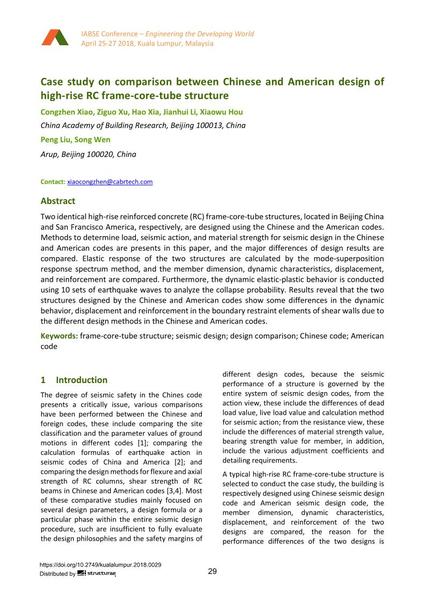Case study on comparison between Chinese and American design of high-rise RC frame-core-tube structure

|
|
|||||||||||
Bibliographic Details
| Author(s): |
Congzhen Xiao
(Arup, Beijing 100020, China)
|
||||
|---|---|---|---|---|---|
| Medium: | conference paper | ||||
| Language(s): | English | ||||
| Conference: | IABSE Conference: Engineering the Developing World, Kuala Lumpur, Malaysia, 25-27 April 2018 | ||||
| Published in: | IABSE Conference Kuala Lumpur 2018 | ||||
|
|||||
| Page(s): | 29-38 | ||||
| Total no. of pages: | 10 | ||||
| DOI: | 10.2749/kualalumpur.2018.0029 | ||||
| Abstract: |
Two identical high-rise reinforced concrete (RC) frame-core-tube structures, located in Beijing China and San Francisco America, respectively, are designed using the Chinese and the American codes. Methods to determine load, seismic action, and material strength for seismic design in the Chinese and American codes are presents in this paper, and the major differences of design results are compared. Elastic response of the two structures are calculated by the mode-superposition response spectrum method, and the member dimension, dynamic characteristics, displacement, and reinforcement are compared. Furthermore, the dynamic elastic-plastic behavior is conducted using 10 sets of earthquake waves to analyze the collapse probability. Results reveal that the two structures designed by the Chinese and American codes show some differences in the dynamic behavior, displacement and reinforcement in the boundary restraint elements of shear walls due to the different design methods in the Chinese and American codes. |
||||
| Keywords: |
seismic design Chinese code frame-core-tube structure design comparison American code
|
||||
